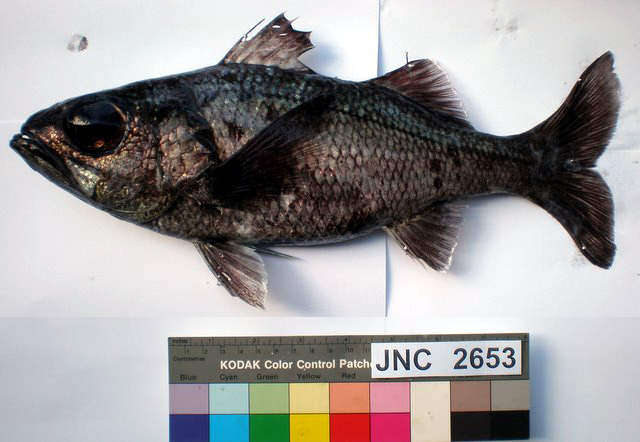| Malakichthyidae (Temperate ocean-basses) |
| 40 cm TL (male/unsexed) |
|
demersal; marine; depth range 60 - 500 m |
| Western Central Pacific: Japan, Taiwan and off Samoa Is., Fiji, Tuvalu and New Caledonia. |
|
Dorsal spines (total): 10-10; Dorsal soft rays (total): 10-10; Anal spines: 3-3; Anal soft rays: 7-7; Vertebrae: 25-25. This species is distinguished from its congeners by the following set of characters: lower jaw with a row of conical teeth posterior to a canine tooth near symphysis; absence of basioccipital fossa; proximal-middle radial of first anal-fin pterygiophore with no concavity on anterior surface; pectoral-fin rays 15; first gill arch with 14-15 gill rakers on lower arm; lateral-line scales 49-51 (Ref. 123567). |
| Apparently occurs on rocky slopes of islands and seamounts (Ref. 37257). |
|
Not Evaluated (N.E.) Ref. (130435)
|
| harmless |
Source and more info: www.fishbase.org. For personal, classroom, and other internal use only. Not for publication.

